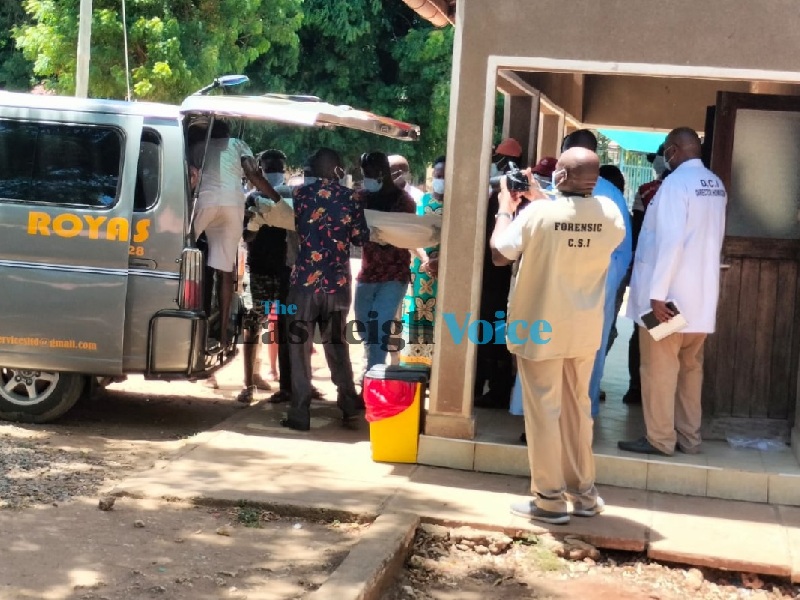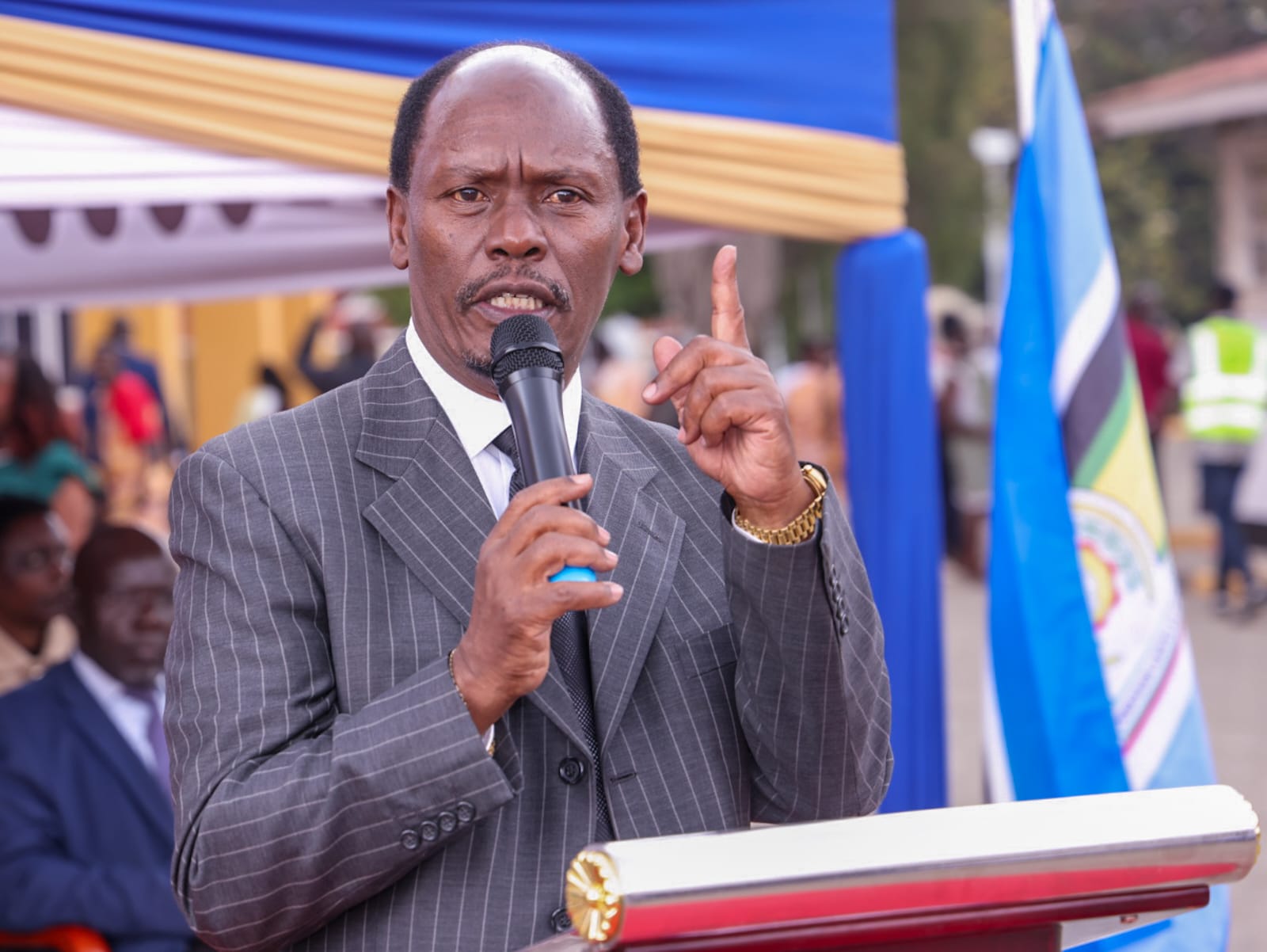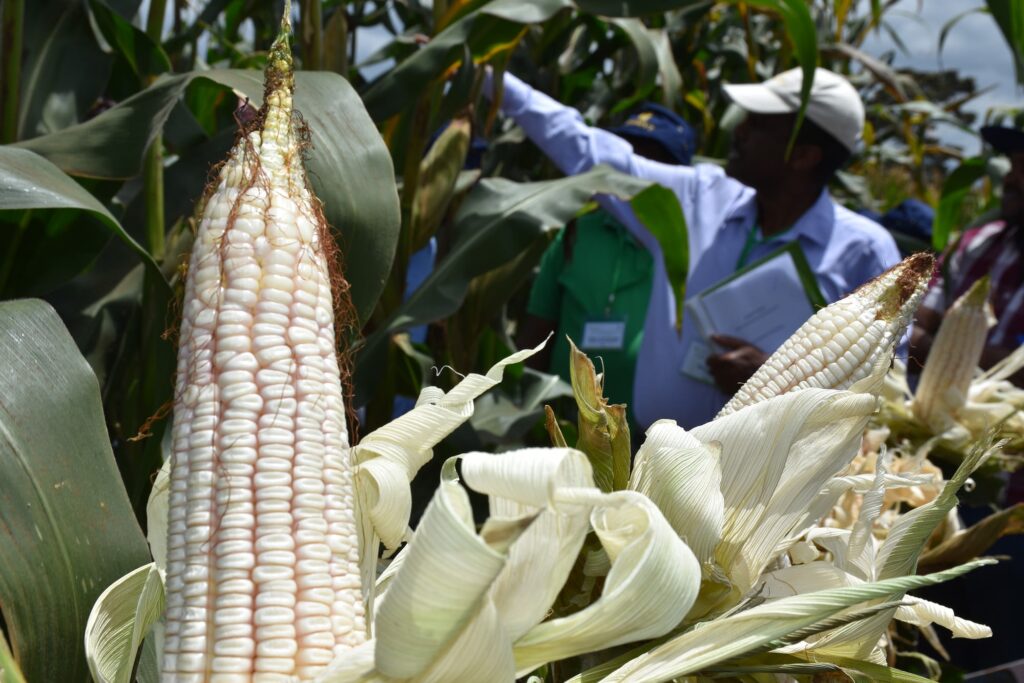Concerns raised over identification process of Shakahola massacre victims

The Kenya National Commission on Human Rights's Chairperson Roseline Adede complained that the process was painfully slow adding that by 1 pm only one family had identified four of its kin.
Families of victims of the Shackahola massacre have begun identifying bodies of their kin, before taking them home, two years after they were last seen alive.
Last week the government announced out of 429 bodies exhumed from the vast Shakahola forest, 34 had their DNAs confirmed and their families contacted for collection.
More To Read
- Prison officer summoned over alleged torture of Mackenzie's wife, other female suspects
- How security agencies ignored warnings over Shakahola Forest leading to massacre
- Shakahola massacre case:Officer denies early awareness of cult allegations
- Shakahola: Gruesome details surface as Mackenzie's manslaughter case begins
The process kicked off Tuesday with each of the families getting a chance to view the bodies.
The process involved moving the bodies from containers to Malindi Sub-County Hospital morgue's viewing bay where the family is allowed to identify their kin before the body is rolled to the hearses.
 Family members of a Shakahola massacre victim after viewing the body of their kin at the Malindi Sub-County Hospital morgue on March 26, 2024. (Photo: Farhiya Hussein/EV)
Family members of a Shakahola massacre victim after viewing the body of their kin at the Malindi Sub-County Hospital morgue on March 26, 2024. (Photo: Farhiya Hussein/EV)
Emotions ran high as the family of the eight-year-old boy who escaped the cult and reunited with his family viewed the bodies of his parents and two younger siblings who died of starvation in the Shakahola Forest.
The boy who had moved to the area with his parents Isaac Ngala and Emily Kahunda Wanje and his two younger siblings was rescued by government officials from Shakahola on March 17 last year.
Families of Shakahola massacre victims overwhelmed by emotions while collecting bodies at the Malindi Sub County Hospital morgue pic.twitter.com/mbHUPc96iE
— The Eastleigh Voice (@Eastleighvoice) March 26, 2024
Other families however said they have been unable to identify their kin owing to the extent of the bodies' decomposition.
They said they had not been issued with DNA test results to confirm their identities.
Amnesty International, Kenya has vowed to go to court to compel the government to release the findings.
"The release today is less than 10 per cent of the bodies that have been lying at the Malindi Hospital Mortuary for over a year. It is tragic that more than 400 bodies have not been fully identified and released to their respective families for dignified burial," Amnesty International Kenya's Executive Director Irungu Houghton said.
 One of the bodies being wheeled away at the Malindi Sub-County Hospital morgue on March 26, 2024. (Photo: Farhiya Hussein/EV)
One of the bodies being wheeled away at the Malindi Sub-County Hospital morgue on March 26, 2024. (Photo: Farhiya Hussein/EV)
"The public deserves a ministerial statement that explains why the other 400 bodies are yet to be released and I call on Kenyan families who suspect their relatives may have perished in the Shakahola to check the Malindi Hospital DNA database for them."
At the same time, the Kenya National Commission on Human Rights's Chairperson Roseline Adede complained that the process was painfully slow adding that by 1 pm only one family had identified four of its kin.
"If the government does not fasten the process, then this might take a month," she said and called for the setting up of counselling units to increase their manpower as families were turning out in large numbers to view the bodies.
She further called on the government to reunite children who were taken to rescue centres with their families and waive the mortuary fee, if it comes up.
After exhuming the bodies last year, detectives discovered that some were badly decomposed intentionally in a bid to conceal evidence.
At the time, detectives revealed that the persons tasked with conducting burial rites would wrap up the bodies in sheets or canvas to aid faster decomposition of the bodies.
That added to the hot weather conditions of Shakahola helped speed up the decomposition process thus complicating investigations as one cannot be certain of the cause of death and identity of a decomposed body.
 Families of the Shakahola cult victims at the Malindi Sub County Hospital before they collected the bodies of their kin on March 26, 2024. (Photo: Farhiya Hussein/EV)
Families of the Shakahola cult victims at the Malindi Sub County Hospital before they collected the bodies of their kin on March 26, 2024. (Photo: Farhiya Hussein/EV)
"The ones exhumed were decomposed. Decomposed bodies look alike so it's impossible to be certain of identity until we resort to science," Chief Government Pathologist Dr Johannes Oduor explained at the time.
On orders from the Director of Criminal Investigations (DCI) Mohamed Amin, that evidence of the murder charge be proven beyond a reasonable doubt to avoid the risk of presenting half-baked evidence or conducting shoddy investigations, detectives had to thoroughly scour the vast forest, one homestead after the other.
"The case has many suspects, if we present half-based evidence and all suspects including Paul Mackenzie are released, then the blame will be upon us," the Director told Senators last year.
To tighten their evidence, detectives had to fetch the coordinates of each grave and homestead they discovered in the event the judge handling the murder case would be required to revisit the crime scene.
"We projected that the weather conditions and the upcoming El Nino, wild animals and so forth would disintegrate the gravesites and temporary homestead three to four months down the line thereby making them difficult to trace," a detective said at the time.
"We do not have control over the pace within which that is done," added the detective when Senators complained over delays in charging the main suspect Paul Mackenzie.
As phase five and a new round of exhumations begin, human rights groups want the government to quash suspicions of a cover-up by availing regular briefings on the progress and pathological examinations as well as providing reasonable access to human rights agencies and members of the media.
Additional reporting by Mary Wambui
Top Stories Today



















